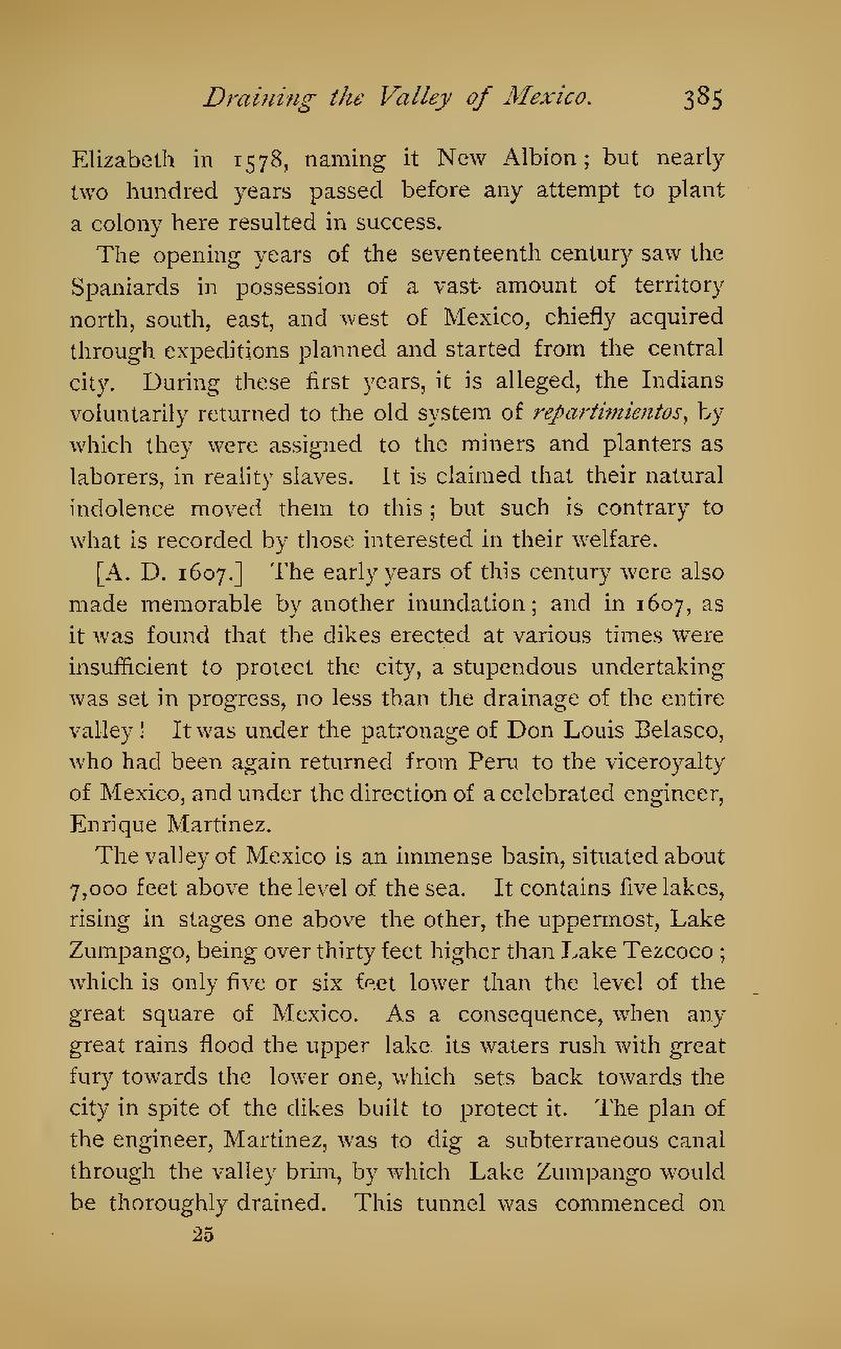Elizabeth in 1578, naming it New Albion; but nearly two hundred years passed before any attempt to plant a colony here resulted in success.
The opening years of the seventeenth century saw the Spaniards in possession of a vast amount of territory north, south, east, and west of Mexico, chiefly acquired through expeditions planned and started from the central city. During these first years, it is alleged, the Indians voluntarily returned to the old system of repartimientos, by which they were assigned to the miners and planters as laborers, in reality slaves. It is claimed that their natural indolence moved them to this; but such is contrary to what is recorded by those interested in their welfare.
[A. D. 1607.] The early years of this century were also made memorable by another inundation; and in 1607, as it was found that the dikes erected at various times were insufficient to protect the city, a stupendous undertaking was set in progress, no less than the drainage of the entire valley! It was under the patronage of Don Louis Belasco, who had been again returned from Peru to the viceroyalty of Mexico, and under the direction of a celebrated engineer, Enrique Martinez.
The valley of Mexico is an immense basin, situated about 7,000 feet above the level of the sea. It contains five lakes, rising in stages one above the other, the uppermost, Lake Zumpango, being over thirty feet higher than Lake Tezcoco; which is only five or six feet lower than the level of the great square of Mexico. As a consequence, when any great rains flood the upper lake its waters rush with great fury towards the lower one, which sets back towards the city in spite of the dikes built to protect it. The plan of the engineer, Martinez, was to dig a subterraneous canal through the valley brim, by which Lake Zumpango would be thoroughly drained. This tunnel was commenced on
